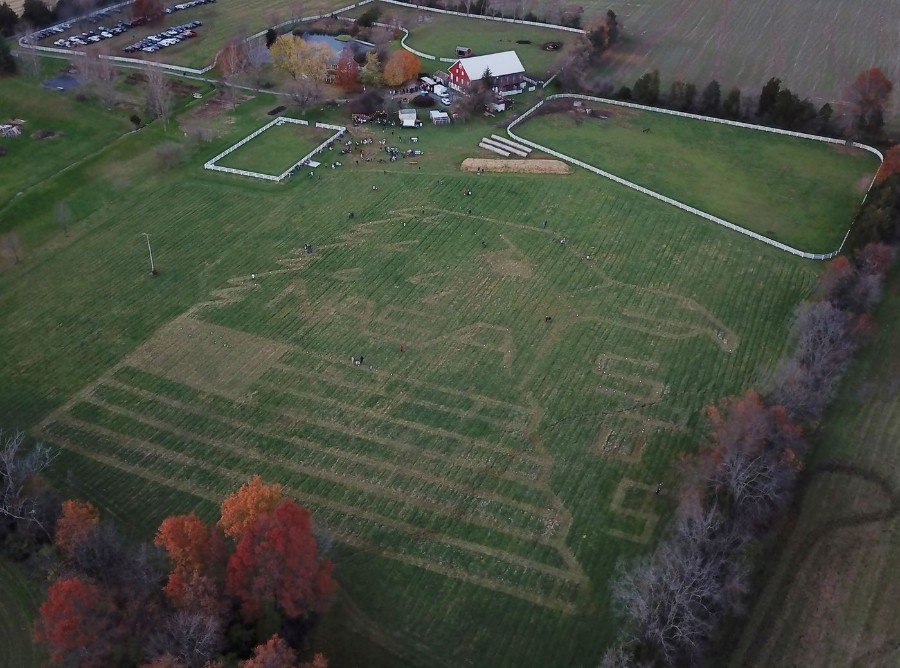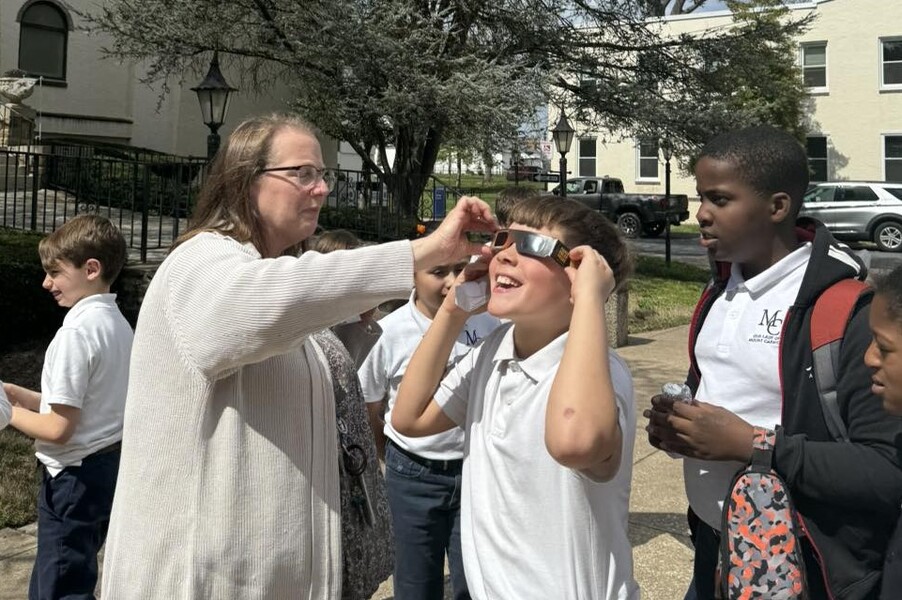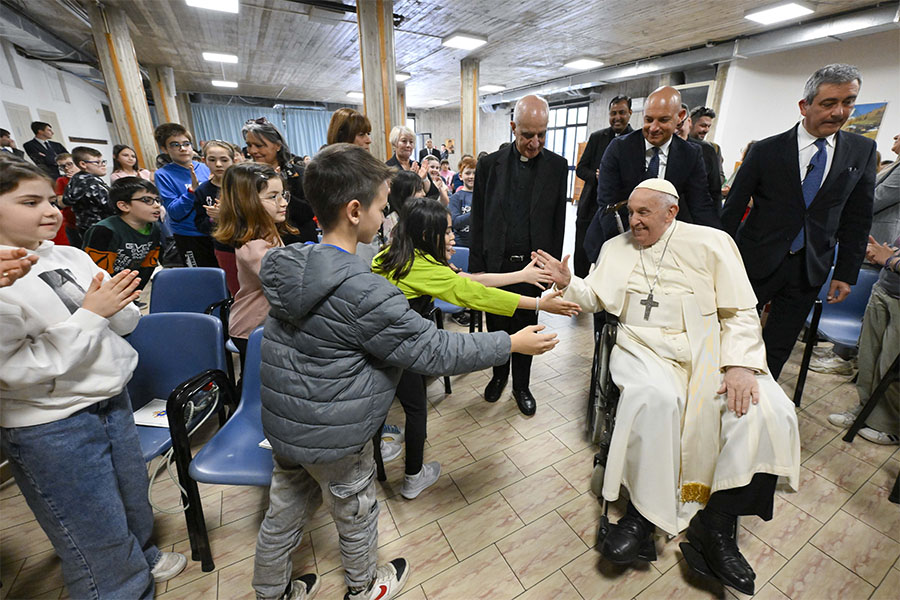
On a brisk November evening, dozens of school-aged children meandered around a remote farm in Taneytown. The evening had a carnival atmosphere, with music playing over a sound system, a line forming in front of a food truck and lively chatter from groups of friends clustered together to protect against a cool wind. A buzz began to grow in the crowd as dusk approached, for they were part of something big, really big, you-can-see-it-from-space big.
The gathering was the culmination of months of work, part of St. John Catholic School’s application for a STEM accreditation. The Westminster school needed a major project to anchor its application, and school leaders decided to go all out by attempting to win a highly competitive downlink with the astronauts on the International Space Center. The school had to do something special to stand out from the numerous other institutions also trying to win a downlink. The plan hinged on the ambitious goal to create a logo so large that it could be seen from space.
When students returned from summer break, they learned about the STEM accreditation, the application to speak with astronauts aboard the International Space Center, and the idea to create a massive logo on a four acre plot in Taneytown loaned for use to the school. Students designed a logo composed of an Eagle (the school mascot), a flag and the acronyms NASA and SJS (St. John School).
Seventh and Eighth grade STEM classes were devoted to learning the math and science skills behind plotting the logo on a four-acre plot of land. Volunteers with a background in engineering surveyed the perimeter of the space. Discovering a student-led strategy for the interior coordinates proved challenging, but using the Engineering Design Process, students developed a multitude of ideas that were tested, improved and finally mastered. Middle school students took a field trip to the farm to survey the land where groups of students plotted 36 twenty-foot coordinates using measuring tape and twenty-foot rope. Once the coordinates were established, students then plotted the logo. Using field spray paint, students then connected the dots. Shortly thereafter, volunteers helped mow the logo into the field. After months of planning and work, the logo was finally ready.
Students, parents, teachers, school staff and community leaders began to arrive on the farm early in the evening. Colored lights placed in student decorated luminaries were distributed across the field. Each element of the four-acre design had a specific colored light. Finally, a drone was sent skyward to capture an image of the massive logo.
The result was stunning. What was only a wild idea a few months prior was now a reality. The students and staff had succeeded in creating a beautiful image, one that could be seen from space.
“This truly was an amazing accomplishment, proving that with hard work, tenacity, collaboration and a little luck, we can reach stars,” said Clare Hoerl, art and STEM teacher at St John School.
The application for the downlink from the International Space Center has been submitted to the Johnson Space Station, and the school is awaiting their response. Regardless of the outcome, the students can be proud of their accomplishments.
Also see
Copyright © 2021 Catholic Review Media







